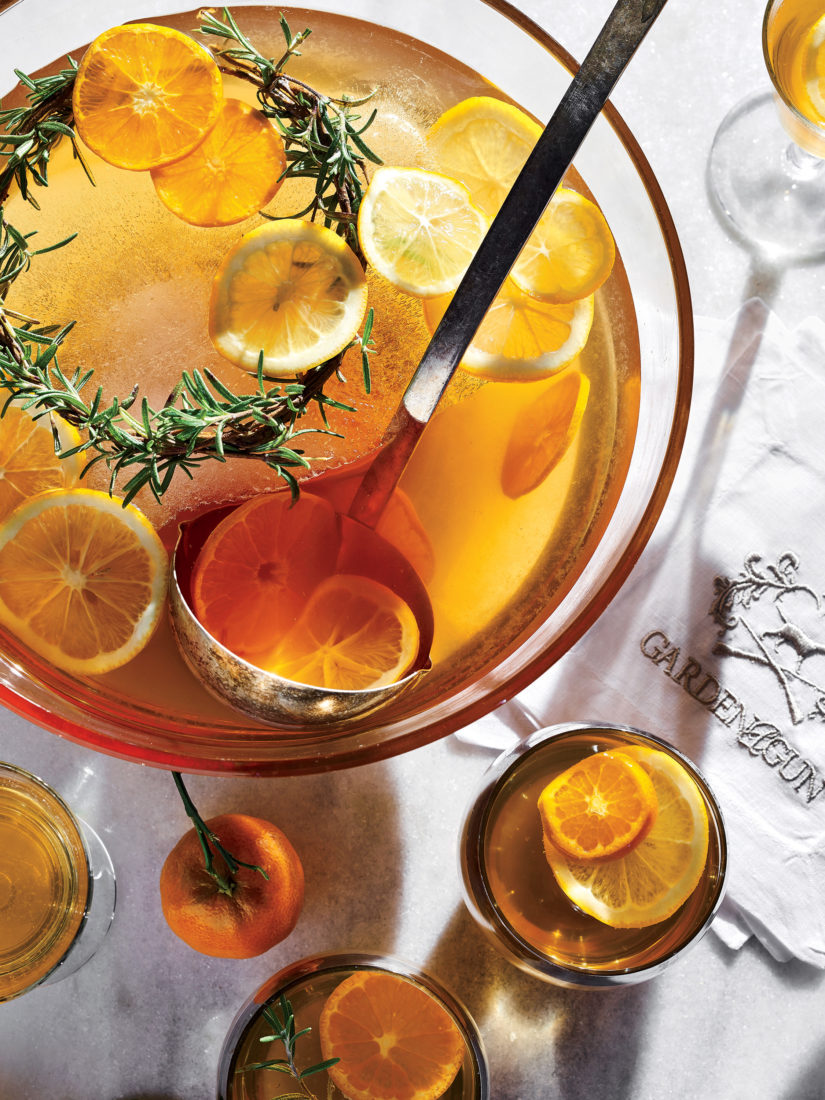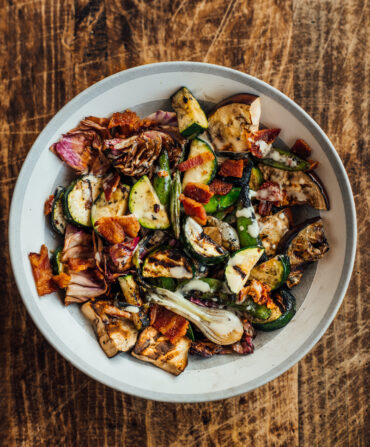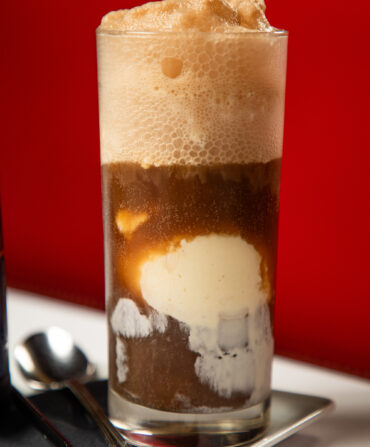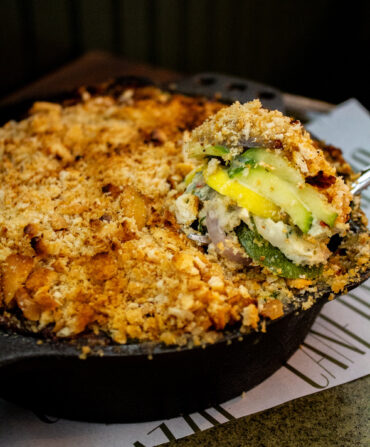Punch has always been eager to start the party early. Bowls brimming with the refreshment began to grace hallway tables in the colonies in the late 1600s. But its popularity blossomed in the next century, when imbibers mixed rum or whiskey or brandy or all three with citrus and sugar. Particularly ubiquitous in ports where these provisions were easy to gather, punch was favored by classes both upper and lower.
With the advent of the cocktail, however, the libation fell from favor, either retreating to rarefied enclaves such as society balls or weakening into sherbet-dolloped versions suitable for church picnics. Only in more recent years have bartenders rediscovered the pleasures of the bowl, and today it’s not uncommon to spot an iced punch prominently displayed on a craft-cocktail bar. It was no surprise, then, that when Garden & Gun asked Alba Huerta to invent a drink to commemorate its tenth anniversary, the Houston bartending luminary landed on just that.
She’d been given a tall order: Capture both the South and the spirit of G&G in a glass. After some experimenting, Huerta built the punch around a booze that spoke a language familiar to the South, one that has dusted itself off in recent years, becoming trendy in a way our parents would have found perplexing but our grandparents would not: bourbon. Any brand on hand is fine (punch is forgiving), but Huerta suggests using one high in rye, such as Bulleit, Old Grand-Dad, or Four Roses. The grain’s spiciness stands up to Huerta’s other ingredients, some of which can be, frankly, a little bossy.
That includes Madeira, the rich, pruney notes of which harmonize with bourbon when mixed at the right ratios. Madeira also salutes the region’s past—the Portuguese potable was favored in Southeast ports in the 1700s, owing to its willingness to travel, favorable trade winds, and the arcane tax policies of our colonial overlords.
Another essential element: the lengthener. Punch shouldn’t be high proof, but rather easy to ladle throughout an afternoon without causing someone to get so soused they upset the punch bowl. Tea, club soda, or plain tap water can extend a bowl; Huerta used the last option and also added dry hard cider. The sparkling quaff not only imparts a little apple flavor, but also nods to the artisanal ciders of today. “I love the production standards of Foggy Ridge,” Huerta says of the Virginia-based cidery, where cider maker Diane Flynt has helped revive the disappearing tradition.
The sweetness of bourbon and the tang of cider hang out like best buds long separated (the two were early twinned in a popular nineteenth-century drink called the Stone Fence). Yet even with the customary hit of citrus (in this case, lemon juice), the taste rang a bit hollow. To remedy, Huerta sought to layer in a hint of fruit. Peach was obvious for a Southern drink, but too saccharine for this recipe. So she reached for a subtle apricot liqueur, which broadened and deepened the punch without making it cloying. Apricot also offers a tip of the hat to Southern Comfort, which began almost 150 years ago in New Orleans as an apricot-inflected, whiskey-flavored liqueur.
A dash of Angostura bitters enhances the complexity, simple syrup rounds out the character, and a large lump of ice to chill also helps dilute it a tad more.
We’re almost there. What’s left?
Just add friends.








